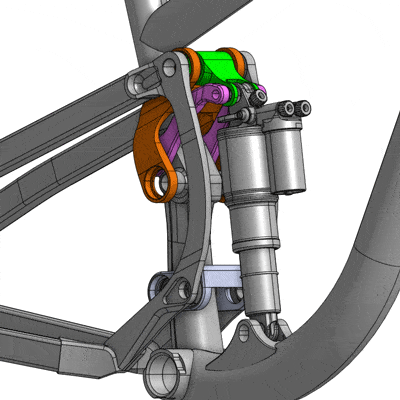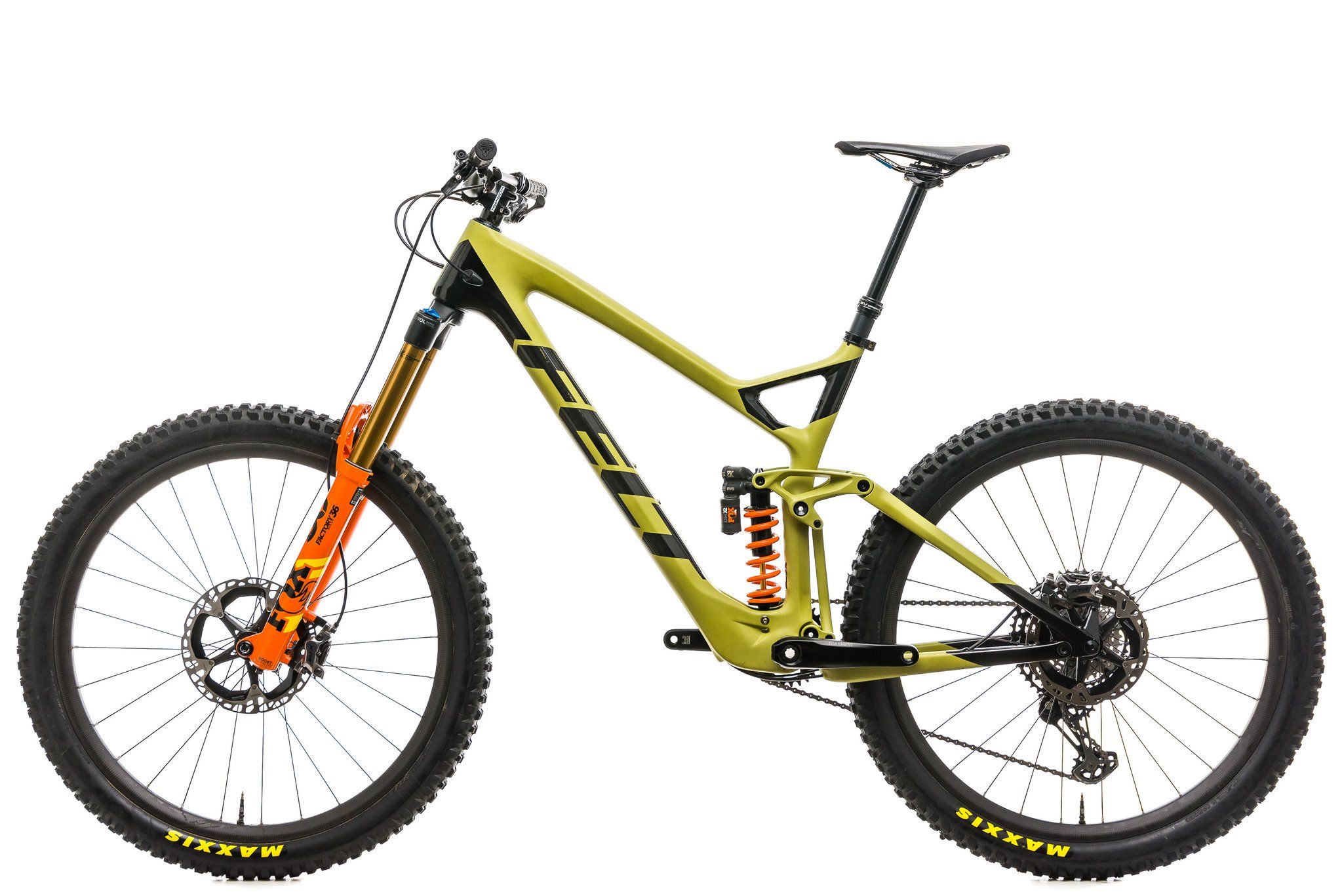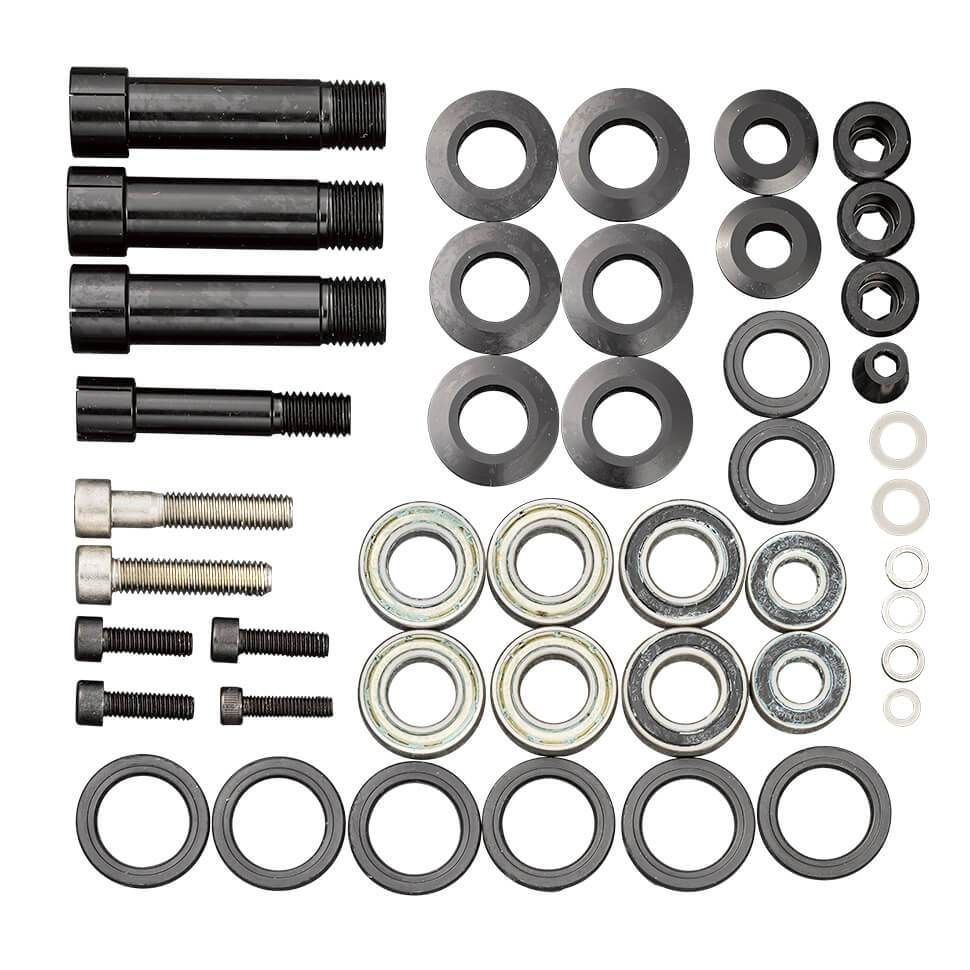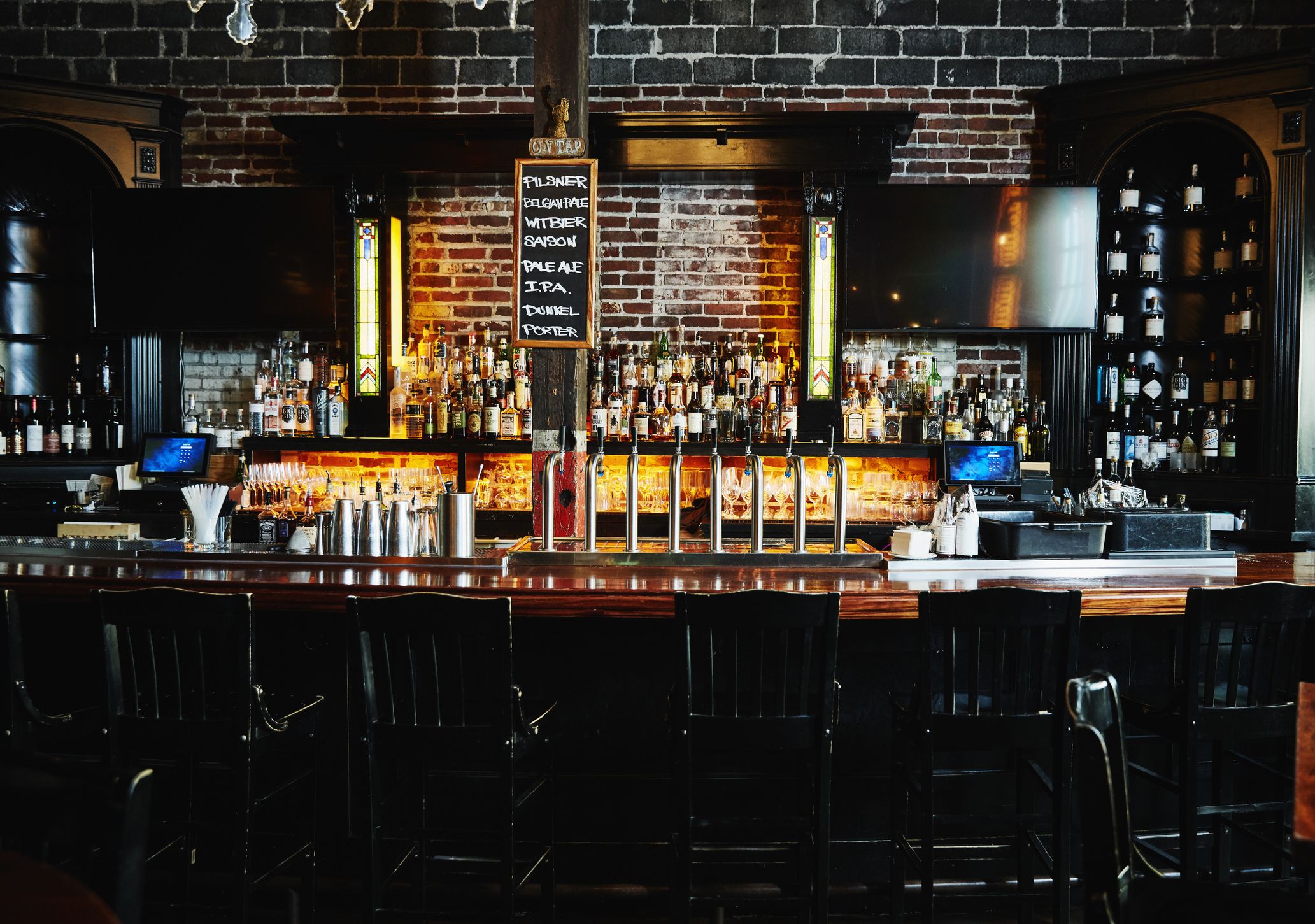Suspension Tech: What’s a Bar and How Many Do You Need?
Three mountain bikers walk into a bar... no, not that bar, a suspension bar. What are we talking about? Read on...
Recently, I was talking to a suspension engineer and we got on the subject of bars. Despite the bicycle industry’s traditionally robust support of drinking establishments around the world, this was not a discussion about the best watering hole in Shenzhen. We were talking about the intricacies of rear suspension systems on bicycle frames.
A bar is one element of a rear suspension system. Within cycling, the term is most commonly preceded by the number four, as in “four-bar suspension” and used in reference to popular suspension designs like DW-Link, VPP, and FSR/Horst Link.
But a full suspension bike can have more, or less, than four bars. So, with the help of some of the industry’s biggest brains, I’m going to dive into what exactly is a bar, what they do, and why some bikes have more, or fewer, bars.

So, what is a bar, anyway?
Let’s start at the start: WTF is a bar?
Luther Beale of Level One Engineering—the designer behind the suspension of the Fuji Auric and Diamondback Release, among others—describes a bar as: “A bar is a rigid linkage member—you could also call it a link.”
Chris Currie— designer of the 3VO suspension used on the Jamis Portal and Hardline models—explains that bar, “might seem like an awkward word to use, but it starts to make sense if you think of something really simple, like a pry bar.” Currie continues, “Think of a flat-blade screwdriver prying open the lid on a container of paint. That’s actually a two-bar system. There’s the stubby little tip of the screwdriver that’s trying to pry the lid upward, a joint where part of the screwdriver is pivoting against the side of the can, and the longer part of the screwdriver with your hand pressing down at the end of it. That’s link, pivot, link. Two links. Two bars.”

How do you count bars on a suspension bike?
When we talk about four-bar or six-bar suspension, we are typically referring to the elements of a suspension design that influence chain growth, anti-squat (acceleration), anti-rise (braking), and axle path, and not those that affect shock rate.
There’s the stubby little tip of the screwdriver that’s trying to pry the lid upward, a joint where part of the screwdriver is pivoting against the side of the can, and the longer part of the screwdriver with your hand pressing down at the end of it. That’s link, pivot, link. Two links. Two bars.
The front triangle is bar number one because , “Without the front triangle, the other bars would not be constrained.” says Yeti’s director of engineering Peter Zawistowski, creator of the brand’s Switch Infinity (four bar) and Switch Sixfinity (six bar) systems. He continues, “Linkage analysis depends upon the reference frame considered. It is typically most intuitive to consider the front triangle body as stationary (for analysis). This is another clue as to why the front triangle counts as a bar, it is all about the reference frame.”
So, since the front triangle is the first bar, from there you count the number of additional elements. A simple, single-pivot bike—such as an Orange Stage Evo—is a two-bar bike: the swingarm and main triangle. A Pivot Switchblade (DW-Link) is a four-bar bike: main triangle, swingarm, upper link, and lower link. Atherton’s Enduro 29 is a six-bar bike according to Weagle, hence the system’s name: DW6.
What about shock linkages?
Some bikes have a multi-link (bar) system that only modifies the leverage on the shock with no influence on the rear wheel’s axle path. For example, the DELTA system used on the Evil Following employs a four-bar linkage specifically to control the leverage ratio. The Following’s single-pivot— between the swingarm and front triangle—defines the bike’s anti-squat, anti-rise, chain growth, and axle path properties. Therefore, it is not considered a four-bar bike, but instead is a two-bar design
Zawistowski points out there are some “six-bar” bikes—Knolly 4X4, Polygon’s IFS, the Specialized Enduro/Kenevo SL, and the Canyon Sender for example—that are not complete six-bar systems, “In these cases, a four-bar linkage defines the wheel path. Two other links are added to the system to control the leverage rate. This means they have four-bar control of the anti-squat and anti-rise, and six-bar control of the leverage rate.”

What about flex pivots?
Some bikes—including Spot’s Living Link systems, Cannondale Scalpel, Specialized Epic/Epic Evo, Specialized Stumpjumper, Moots YBB, and many others—use engineered flex instead of a traditional pivot with bearings and hardware. This is a gray area, explains David Earle of Sotto Group, “There are many things like flex pivots that can make things more complicated and unclear with regard to how the system is controlled and how many bars there are in the system. ” Earle had a hand in the first generation of the Santa Cruz VPP system, created Yeti’s Switch system, and the first iteration of the Sine system used by Alchemy’s Arktos.
How many bars can a bike have?
The minimum number is probably two—though a bike like the Moots YBB might be considered a one-bar. Theoretically, there’s no ceiling. But, “practically, there would need to be a very compelling problem/solution to keep adding and adding links,” says Weagle.

Here’s how Zawistowski explains things:
“The fewer the bars within the linkage, the less control the designer has of the mechanical input (suspension layout and frame structure), as well as the mechanical output (suspension characteristics or performance). However, the obvious advantage is simplicity. As the number of bars increases, the potential for suspension characteristic tunability increases.”
Zawistowski adds, “The potential linkage layout configurations and output possibilities increase non-linearly as additional bars are added to a system. This added complexity to the linkage may allow a designer to nail suspension characteristics, structural goals, and aesthetics while simultaneously working around packaging constraints like geometry, suspension envelopes, dropper-post insertion, water bottle fitment, e-bike components, etc.”
In essence, the more bars you have, the more—and finer—control you have of the suspension system’s properties. An example of why a designer might use more bars is an e-bike’s motor. The size and shape of an e-bike’s mid-motor prevent designers from placing pivots and links in the same location they can when designing an unpowered bike. In order for a designer to get suspension properties and outcomes similar to their four-bar bikes—but with the much different link and pivot locations required by a mid-motor e-bike—they might turn to a six-bar system. And that’s exactly what Zawistowski did with Yeti’s 160-E.
The Drawbacks of More Bars

The typical issue with more bars is they introduce more potential headaches, such as more flex, wear, maintenance, noise, weight, and misalignment potential.
“At some point, there are diminishing returns due to the increased number of pivots decreasing frame stiffness and increasing weight for relatively little gain,” says Pivot’s president, Chris Cocalis (Pivot’s bikes use DW-link four-bar suspension). Having more bars also typically increases development time and manufacturing costs, which results in a more expensive product for the consumer.
However, not everyone agrees that mo bars mean mo problems. “I’ve been building six-bar bikes for over 10 years now, and some of the six-bar layouts are lighter and stiffer than their four-bar counterparts with no appreciable maintenance increase,” Weagle says. “Some of the other six-bar layouts I’ve built (like the DW6) can be used to simplify custom frame geometry and help lower additive manufacturing costs compared to the four-bar equivalent DW-link version.”

How Many Bars is Best?
The right number of bars is as many as are needed to achieve the best bike possible, as Trek’s Director of MTB Frame Technology Dylan Howes explains, “At the end of the day, the most important thing is to have a well-designed bike. A single pivot (a lever arm bike) can be just as good as a six-bar with good placement of pivots, good frame stiffness, shock design, leverage rate, etc.” Howes, who was was instrumental in the creation of Trek’s ABP design found on the Fuel EX, and Top Fuel continues. “What the single-pivot bike might not have is room for a full dropper, or a water bottle, or a more complex leverage rate. This is why we end up creating the best balance, or really, what engineering becomes, is the best compromise to get us the performance we want, in a package that fits all the other things we have fit, doesn’t cost too much, and certainly doesn’t weigh too much.”
Over the years, I’ve ridden almost every conceivable suspension system. To be honest with you, I used to believe more bars/more complicated suspension systems were better than simpler systems. But as I sampled more bikes, they taught me that a great bike is more than the sum of its pivots. In the right hands, any suspension system can be well executed and—when combined with good geometry and frame qualities—be part of a brilliant full suspension bike.
READ MORE ON: bars expert expainer explainer suspension tech talk

